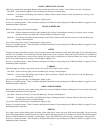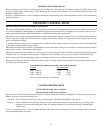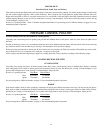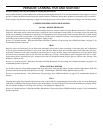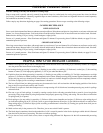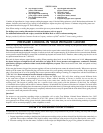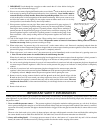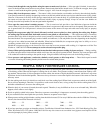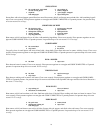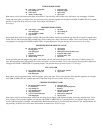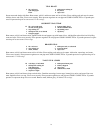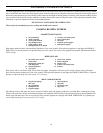
21
ZESTY SALSA
10 cups chopped, seeded, 2½ cups chopped and seeded hot
peeled, cored tomatoes peppers (about 1 pound)
(about 6 pounds) 1¼ cups cider vinegar
5 cups chopped and seeded long 3 cloves garlic, minced
green peppers (about 2 pounds) 2 tablespoons cilantro, minced
5 cups chopped onions (about 1 tablespoon salt
1½ pounds) 1 teaspoon hot pepper sauce (optional)
Combine all ingredients in a large saucepot, adding hot pepper sauce, if desired. Bring mixture to a boil. Reduce heat and simmer 10
minutes. Ladle hot salsa into hot jars, leaving ¼-inch headspace. Adjust two-piece caps. Process 15 minutes using boiling water can-
ning method described on page 19. Yield: about 6 pints.
Note: When cutting or seeding hot peppers, wear rubber gloves to prevent hands from being burned.
For boiling water canning information for fruits and tomatoes, refer to page 8.
For additional information and recipes, consult the Ball Blue Book or visit www.homecanning.com.
Recipes provided by Alltrista Consumer Products Company, marketers of Ball
and Kerr
home canning products.
PRessuRe CooKinG in YouR PRessuRe CanneR
Follow the step-by-step instructions (see “How To Pressure Cook Foods” below) for cooking in your pressure canner. Prepare food
according to directions in specific recipe.
The canner should never be filled over
2
⁄
3
full. Many foods tend to expand when cooked. If the canner is filled over
2
⁄
3
full, it is possible
for food to expand enough to plug the vent pipe, air vent/cover lock, and overpressure plug. If all of these devices were to become blocked,
excess pressure would be unable to escape and would build up beyond safe control levels. Therefore, when cooking any food, do not let
any portion extend above the
2
⁄
3
full level.
Rice and dry beans and peas expand during cooking. When preparing these foods, do not fill the canner over ½ full. Always pre-soak
dry beans and peas overnight in oil, salt, and water (see pages 30-31). Never pressure cook applesauce, cranberries, rhubarb,
pearl barley, split peas, oatmeal or other cereals, dried soup mixes, or pasta. These foods tend to foam, froth, and sputter and may
block the vent pipe.
If the vent pipe becomes clogged, the pressure regulator will not rock and pressure cannot be released normally. When excess pressure
builds up in the canner, the overpressure plug will be forced out of its cover opening, releasing the excess pressure. If the overpressure
plug is ever forced out of its cover opening due to excess pressure while cooking or canning, it is important to call the Test Kitchen at
1-800-368-2194. Do not attempt to use the released overpressure plug.
The canning-cooking rack can be used to hold foods above the liquid level. This will allow cooking several different foods
at the same time without an intermingling of flavors. When a natural blending of flavors is desired, do not use the can-
ning-cooking rack. When cooking two or more foods at the same time, choose those which require the same length of
cooking time. The length of cooking time for a specific food varies greatly with the thickness of the food. For example,
a ½-inch thick slice of potato will be done in 3 minutes whereas a ¾-inch thick slice of potato will be done in 5 minutes. For foods which
do not require the same cooking time, the canner may be quick cooled when there is just enough cooking time left for the food requiring
the shorter cooking time. When the pressure is completely reduced, the cover may be opened and the food added. Then, again place the
cover on the canner and proceed with cooking.
Questions?
For answers to any questions regarding recipes or timetables, call or write: Test Kitchen, National Presto Industries, Inc., 3925
North Hastings Way, Eau Claire, Wisconsin 54703-3703, phone 1-800-368-2194. You may also contact us at our website
www.gopresto.com. When writing, please include a phone number and a time when you can be reached during weekdays if possible.
Inquiries will be answered promptly by letter, telephone, or email.
How To PRessuRe CooK foods
To assure the very best results every time, carefully follow these step-by-step instructions for pressure cooking. You may find it helpful
to refer back to the diagrams on pages 3 through 5.
1. Prepare ingredients according to the directions in the pressure cooking recipe you have selected. Pour liquid into the canner body, as
specified in the recipe or timetable. This liquid is usually water. However, some recipes will call for other liquids, such as wine.
2. Place the cooking rack into the canner, if called for in the recipe (see Helpful Hints on page 23 for guidance on when to use).



